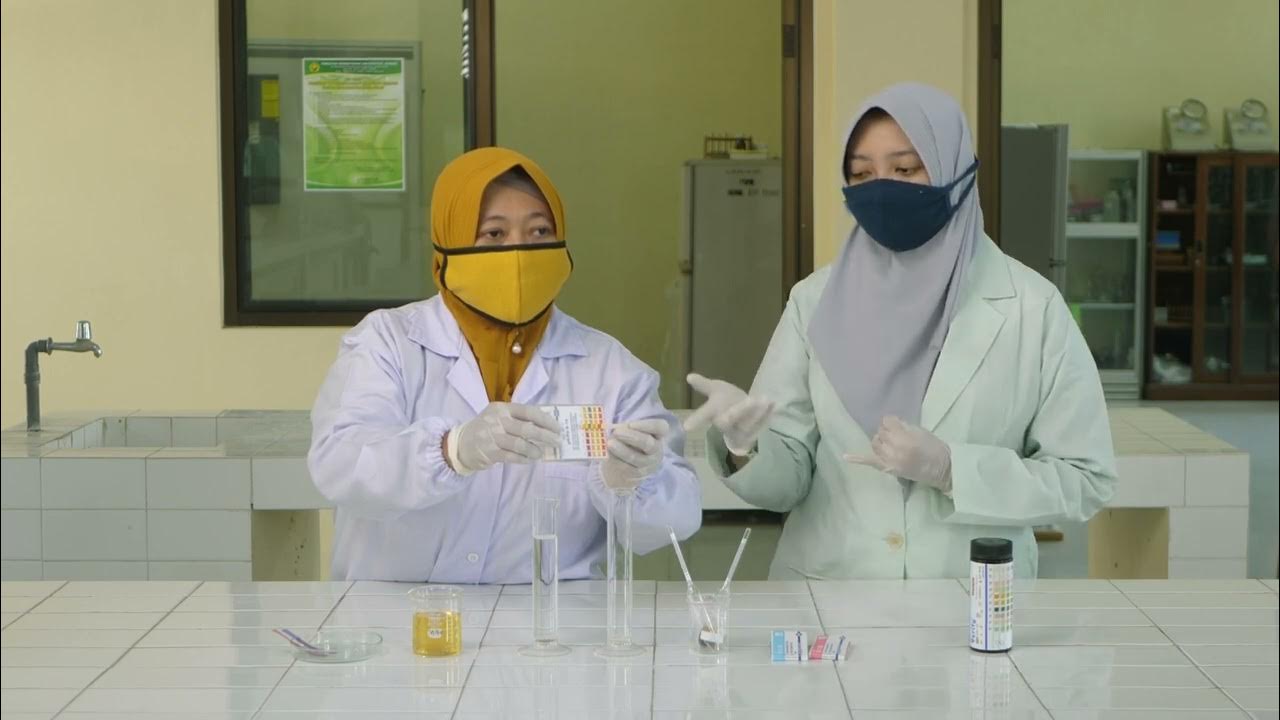Pemeriksaan Total Protein Darah Metode Biuret (Teori Praktikum bagi ATLM Analis Kesehatan)
Summary
TLDRThis video discusses the biochemical examination of total protein levels in the blood using the Biuret method, targeting students in medical laboratory technology. It covers the fundamental role of proteins, their sources, and significance in maintaining bodily functions, including fluid balance and immune response. The presentation details the methods of measurement, the importance of accurate lab procedures, and the implications of protein deficiencies. With a focus on practical applications, the video serves as a valuable resource for understanding clinical chemistry related to total protein assessments.
Takeaways
- 😀 The video emphasizes the importance of effective communication in professional environments.
- 📈 It highlights how clear communication can enhance teamwork and collaboration among team members.
- 🤝 The script stresses the value of active listening as a crucial component of communication.
- 🎯 The necessity of adapting communication styles to different audiences is discussed.
- 💬 The video suggests using visual aids to support verbal communication for better understanding.
- 📅 Regular feedback is encouraged as a means to improve communication practices over time.
- 🔄 The script mentions the significance of non-verbal cues in conveying messages.
- 🛠️ It provides practical tips for overcoming common communication barriers.
- 👥 Building rapport and trust is identified as essential for effective communication.
- 🌐 The video concludes by advocating for ongoing training and development in communication skills.
Q & A
What is the main focus of the video transcript?
-The video discusses the biochemical examination of total protein levels in blood serum using the Biuret method, specifically for Diploma 3 and 4 students in medical laboratory technology.
How are proteins structured and what role do amino acids play?
-Proteins are composed of amino acids linked by peptide bonds. Amino acids enter the body through food, and the body digests them to synthesize proteins primarily in the liver.
What are the components of plasma proteins mentioned in the video?
-The key plasma proteins discussed include albumin, globulin, and fibrinogen, with the focus on measuring total protein, which consists of albumin and globulin, excluding fibrinogen.
What are the normal reference ranges for total protein levels in serum?
-The normal reference range for total protein in serum is between 6.2 to 8.6 grams per deciliter.
What are some functions of plasma proteins in the body?
-Plasma proteins play essential roles in maintaining osmotic pressure, serving as transport molecules for various substances, acting as buffers to regulate blood pH, and providing immunity through antibodies.
What factors can cause a decrease or increase in total protein concentration?
-Prolonged lying down can decrease plasma protein concentration due to fluid redistribution, while factors like dehydration or tourniquet use during blood collection can falsely elevate protein levels.
How is total protein measured using the Biuret method?
-Total protein is measured by mixing serum with Biuret reagent, where proteins react with copper ions in an alkaline solution to form a purple complex, which is then measured photometrically.
What are the potential interferences in the total protein measurement?
-Interferences can arise from hemolysis, bilirubin, lipemia, and certain medications, which can affect the accuracy of the total protein measurements.
What is the significance of the albumin-to-globulin ratio?
-The albumin-to-globulin ratio is important for diagnosing conditions related to protein levels; normally, albumin is less than globulin, with a typical ratio of less than one.
What are the clinical implications of abnormal total protein levels?
-Abnormal total protein levels can indicate various health conditions, such as malnutrition, kidney or liver disease, and may require further testing to identify specific protein fractions that are abnormal.
Outlines

Этот раздел доступен только подписчикам платных тарифов. Пожалуйста, перейдите на платный тариф для доступа.
Перейти на платный тарифMindmap

Этот раздел доступен только подписчикам платных тарифов. Пожалуйста, перейдите на платный тариф для доступа.
Перейти на платный тарифKeywords

Этот раздел доступен только подписчикам платных тарифов. Пожалуйста, перейдите на платный тариф для доступа.
Перейти на платный тарифHighlights

Этот раздел доступен только подписчикам платных тарифов. Пожалуйста, перейдите на платный тариф для доступа.
Перейти на платный тарифTranscripts

Этот раздел доступен только подписчикам платных тарифов. Пожалуйста, перейдите на платный тариф для доступа.
Перейти на платный тарифПосмотреть больше похожих видео

Pemeriksaan Total Protein Darah

Pemeriksaan Protein Total (Metode Biuret) Kelompok 1 Kelas A

Praktikum Biokimia Farmasi : Penentuan Aktivitas Spesifik Enzim

Soal Latihan Persiapan UKOM Mahasiswa TLM Analis D3 D4 (Bagian 17)

Lab Puskesmas RS: Pemeriksaan Total Protein Albumin

PATOLOGI KLINIK - PEMERIKSAAN FISIK URIN
5.0 / 5 (0 votes)
